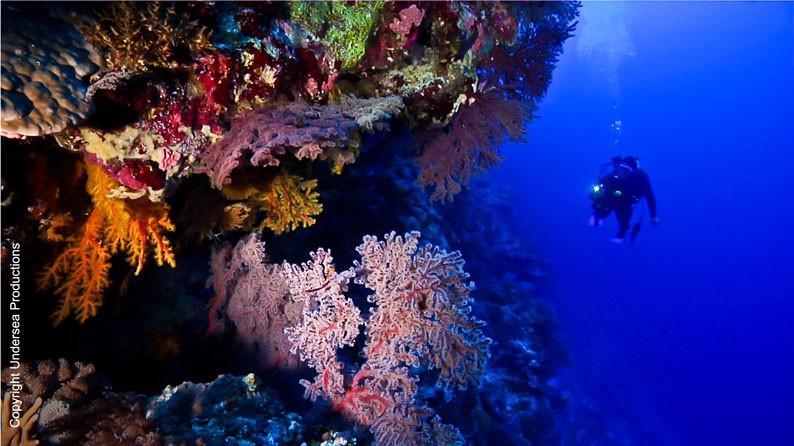Australia's marine parks could be significantly reduced after review
Almost 100,000 sq km of Coral Sea, including important coral reefs, could lose protection from fishing under changes recommended in Abbott-era review

Australia’s commonwealth marine parks could be significantly cut back under recommendations that almost 100,000 sq km of the Coral Sea, including important coral reefs, lose their protection from fishing.
The network of 42 marine reserves was announced by Labor in 2012 after years of consultation and consideration of more than 8,000 submissions. It was welcomed by environmental groups but was designed to have minimal impact on commercial activities, which sparked some criticism from conservationists and scientists.
But when the Coalition was elected in 2013, the reserves were suspended, the then prime minister Tony Abbott saying he didn’t want to “lock up our oceans” and that more consultation with the community was needed.
More than three years later, the report of the review has been completed and it recommends significant changes to the largest part of the reserve network in the Coral Sea.
If implemented, 97,000 sq km would lose no-take zoning, introducing a mix of allowed fishing, including game fishing, longline fishing and underwater trawling.
A number of remote reefs in the Coral Sea that are important for dive tourism and marine biodiversity would lose some of their protection, including Osprey Reef, Shark Reef, Marion Reef and Bougainville Reef.
In addition, a number of other reefs would gain a degree of extra protection, including Holmes, South Flinders and Wreck reefs.
Conservationists said the moves were a huge backward step.
“The Coral Sea is a global hotspot for biodiversity. It’s one of the few reef areas globally that isn’t hammered by overuse,” said Michelle Grady from Pew Charitable Trusts.
“It also has a number of unique reefs. Unlike the Great Barrier Reef, those reefs are much deeper, and evolved in an isolated way. Many of them are unique and should be protected,” Grady said.
The large loss of protection to almost 100,000 sq km in the open-water areas was a big loss, Grady said, since while it impacted very few users now, it was likely to come under great pressure in the future as large fish such as sharks, tuna and marlin become hard to find elsewhere.
“They’ve really ripped it back,” Grady said. “All the science makes it clear that the thing that marine parks need to do to be successful is maximise the size of the no-take zones.”
Fiona Maxwell, from the Australian Marine Conservation Society, agreed. “The icon of the network – one of the world’s most pristine marine ecosystems – has been heavily hit by this review in order to expand commercial longlining,” she said. “This area is on the doorstep of the Great Barrier Reef and is the cradle to the Reef.”
Elsewhere throughout the reserve system, there were recommendations of a mix of changes that would result in a net increase in the area protected but which Grady described as “smoke and mirrors”.
“Particularly in the SW region, they’ve removed high-level sanctuary protection from some of the near-shore parks and pushed it out into deep water, where it’s useful but nowhere near as useful,” she said. “The areas that are under the greatest pressure are the areas that are near-shore.”
Richard Leck from WWF said that if the government implemented the recommendations, it would put Australia out of step with the rest of the world. “Obama is introducing the largest no-take zone in the world in the Hawaiian islands. The rest of the world is increasing the size of no-take zones.”
The report also appeared to undermine the government’s justification for the review in the first place, saying: “There was a strong and consistent message from many stakeholders that the previous consultations that led to the establishment of these reserves had been lengthy and comprehensive, and had for the most part achieved a relatively robust balance of interests in reserve design and zoning.”
The review also noted that the ongoing uncertainty caused by the review itself was causing problems for some operations: “Many stakeholders expressed their desire for certainty so that they could make whatever decisions and adjustments were required and plan their futures accordingly — for example to exit the industry or to invest with confidence.”
Tony Burke, the opposition environment and water spokesperson, who was environment minister when Labor introduced the marine reserves in 2012, said there was no need for the review in the first place. “The only reason the government undertook this process is because Malcolm Turnbull is following the lead of Tony Abbott in failing to protect our oceans.”
“A sustainable future for commercial fishing was entrenched in the original plan and there is no need commercially or justification environmentally for commercial practices to be extended in to a marine national park,” Burke said.
The recommendations will now be taken for more public consultation, the minister for the environment and energy, Josh Frydenberg, said. “I have asked the director of National Parks to start a public consultation process to create new management plans for Australia’s world-leading network of marine reserves.”
He said the government would “endeavour to finalise management plans by mid-2017”.
Photo courtesy of: Undersea Productions



